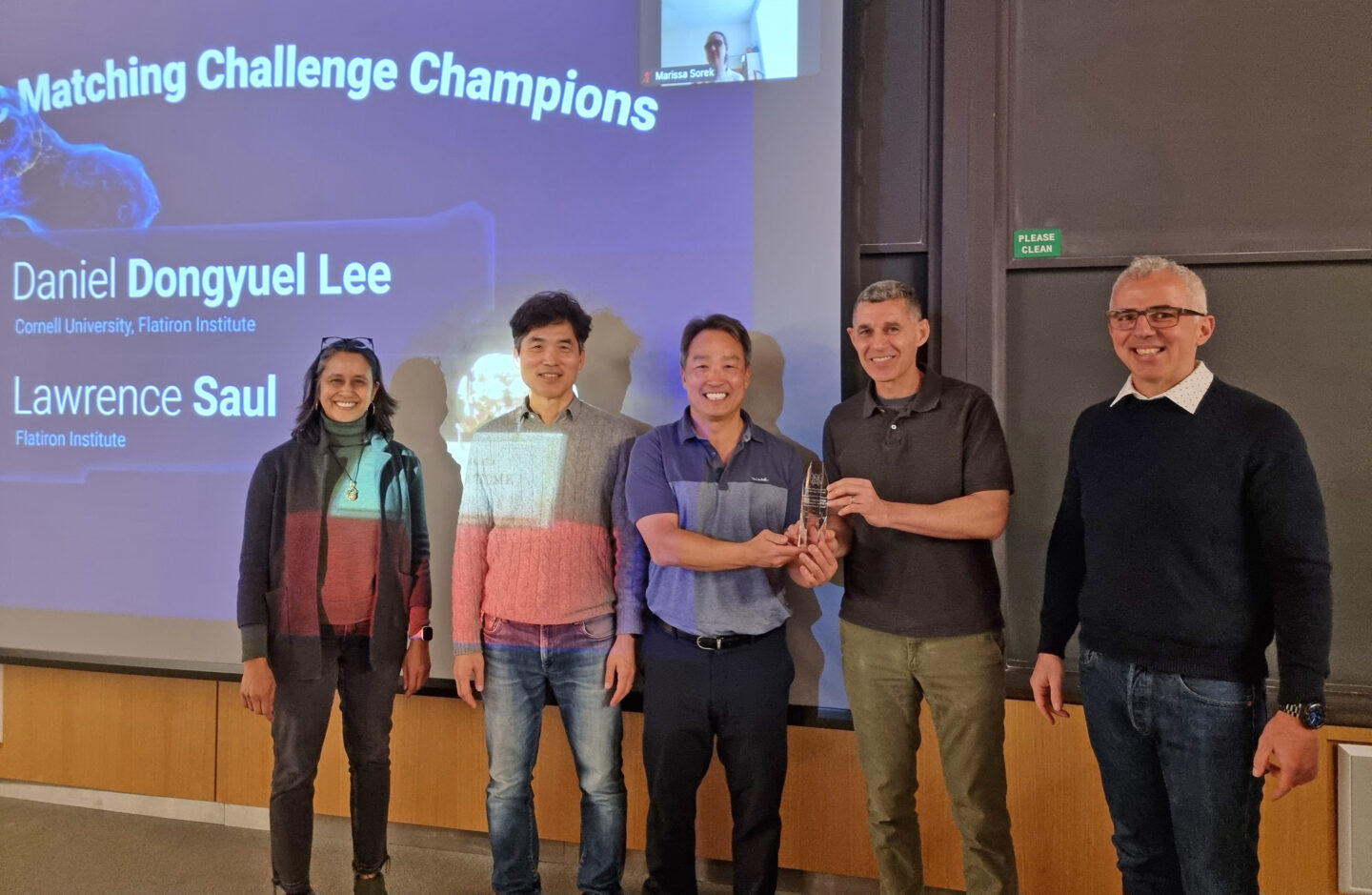
By Grace Stanley
Daniel D. Lee, Tisch University Professor of Electrical and Computer Engineering at Cornell Tech, has won the FlyWire Ventral Nerve Cord (VNC) Matching Challenge award for a competition that tasked researchers with creating a method to align the connectomes — aka neural connection maps — of male and female fruit flies, represented as large graphs.
To find the best way to match the “nodes” (neurons) of the graphs, Lee’s team, named “Old School,” utilized matrix representations. Matrix representations are ways to organize data using matrices, which are rectangular arrays of numbers arranged in rows and columns. Specifically, Lee analyzed doubly-stochastic and permutation matrices, which are special types of square, nonnegative matrices, allowing his team to develop a winning solution.
Lee and his teammate, senior researcher Lawrence Saul of the Flatiron Institute, presented their solution to the FlyWire challenge at the Princeton Neuroscience Institute on March 7. FlyWire is a global initiative that combines human expertise and AI to construct a detailed map of the neural pathways and connections in fruit fly brains, striving to advance research in neurobiology.
“This competition seeks to better understand recently measured connectomes in brains using computational methods,” Lee said. “Our method can potentially help discover gender and individual differences in connectome data in the future.”

Lee and his teammate are both members of the Flatiron Institute Center for Computational Mathematics. Their work at the competition showcased the innovative research styles conducted at both the Flatiron Institute and Cornell Tech, where Lee performs research on machine learning, robotics, and computational neuroscience.
“This work is a good example of research at Cornell Tech that can facilitate further scientific discovery by others,” Lee said. “The open collaborative nature of Cornell was instrumental in nurturing this work.”
Grace Stanley is a staff writer-editor for Cornell Tech.





